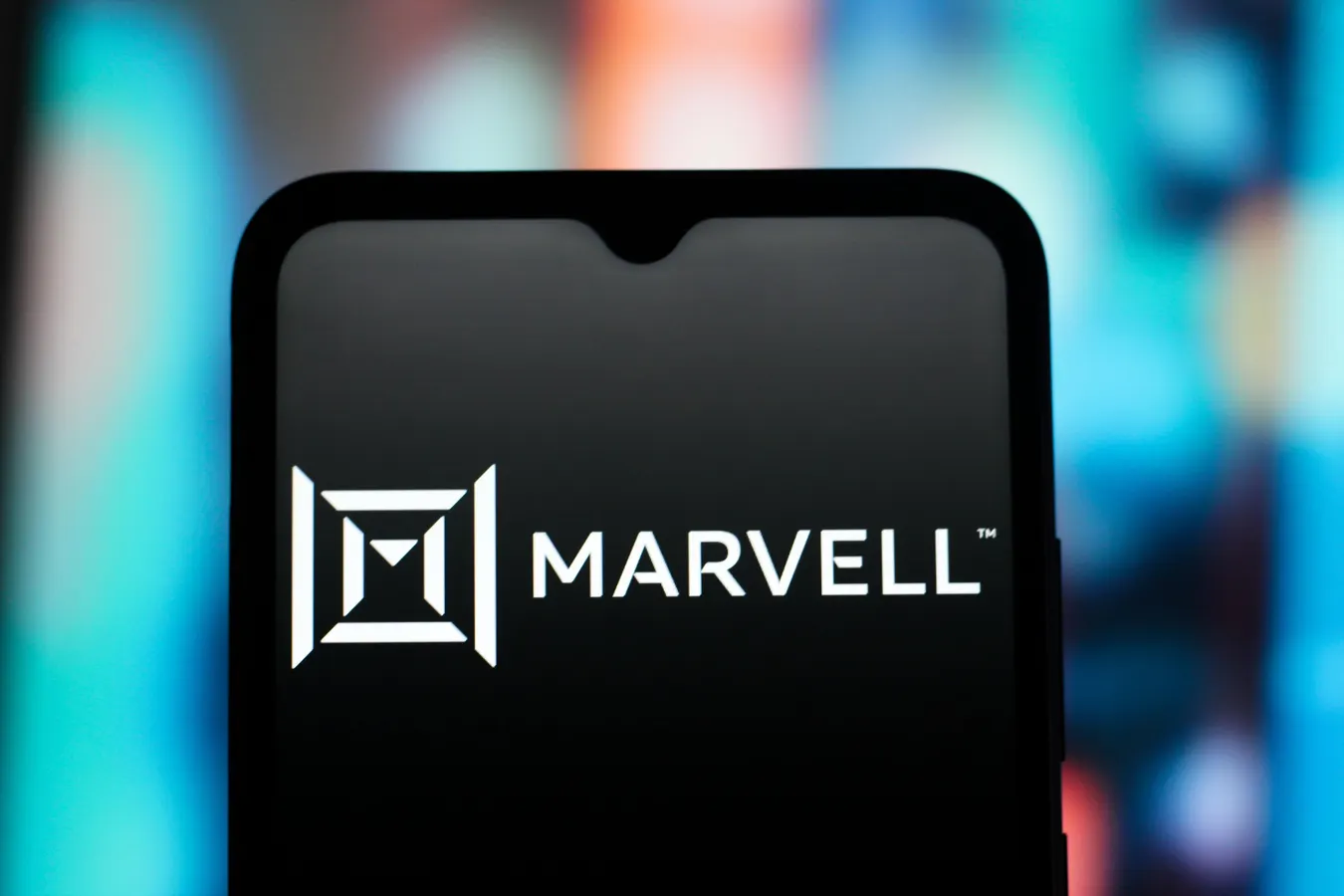By Contributor,Thomas Fuller,Trefis Team
Copyright forbes

CANADA – 2025/08/29: In this photo illustration, the Marvell Technology logo is seen displayed on a smartphone screen. (Photo Illustration by Thomas Fuller/SOPA Images/LightRocket via Getty Images)
SOPA Images/LightRocket via Getty Images
Marvell Technology (NASDAQ:MRVL) has increased approximately 25% since our note on September 5th, where we presented a strong argument for the stock potentially doubling. (Marvell: MRVL Stock To $140) The surge has been driven by a few factors. Firstly, the company revealed a $5 billion stock repurchase authorization and an immediate $1 billion accelerated share repurchase, indicating management’s confidence in the company’s growth potential while suggesting that the stock remains undervalued. Optimistic statements by management during recent investor events also suggest that the company anticipates robust growth related to AI and data centers. In addition, the AI market has experienced several multi-billion dollar deals for chipsets and compute power, involving Open AI, Nvidia (NASDAQ:NVDA), and Oracle, which has likely enhanced sentiment around stocks like Marvell.
Why The Stock Lagged This Year
The stock has experienced a significant sell-off this year, declining almost 30% since early January, partly due to sporadic orders for Marvell’s custom AI accelerators; nevertheless, such quarterly fluctuations are relatively common in this sector. Delays in Microsoft (NASDAQ:MSFT)’s next-generation AI chips due to design modifications could be delaying demand for Marvell’s silicon, while Amazon’s (NASDAQ:AMZN)AWS, which depends on Marvell for its Trainium AI chips, has been losing market share to Microsoft Azure and Google Cloud. However, these concerns seem more like timing-related fluctuations than fundamental issues. Marvell’s long-term potential in AI remains attractive, backed by its optical connectivity chips and rapidly expanding custom ASIC business.
Marvell’s AI Opportunity
Marvell’s engagement in the AI market commenced with its high-speed interconnect solutions for data centers. These optical and electrical interconnects are vital for transferring the massive amounts of data produced by AI and machine learning tasks. Given that these tasks rely on extensive parallel processing and rapid data transfer, they impose significant demands on existing infrastructure, highlighting the necessity for the advanced connectivity technologies that Marvell supplies. The main growth engine is likely to be application-specific integrated circuits (ASICs) designed for AI. Unlike general-purpose GPUs, ASICs are tailored to meet the specific needs of individual clients such as hyperscalers, offering enhanced cost efficiency, reduced power consumption, and exceptional performance.
Major technology firms are amidst an extraordinary AI investment boom. Amazon is projected to spend up to $105 billion on capital expenditures in 2025, while Microsoft, Alphabet, and Meta are estimated to allocate as much as $80 billion, $75 billion, and $72 billion respectively, with a significant portion designated for AI infrastructure such as GPUs from Nvidia (NASDAQ:NVDA). Oracle announced earlier in September that it has entered into contracts worth hundreds of billions of dollars to offer cloud computing services to OpenAI and other large clients. However, investors will eventually start to prioritize returns on AI investments, and companies might become more discerning with their expenditures. Large corporations could seek alternatives to Nvidia, and Marvell’s specialized chips may emerge as a preferred option for hyperscalers.
While such agreements will increase the demand for AI hardware, we believe that Marvell could be in a particularly advantageous position. Why? There are indications that the most compute-intensive phase of AI training may begin to stabilize, as the industry’s focus shifts toward inference – the application of trained models to fresh data in real-time and at a massive scale. Inference is less demanding per task but occurs continuously across millions of users and applications. This transition aligns directly with Marvell’s strengths since it opens avenues for specialized, power-efficient solutions beyond the high-end GPUs that dominate training.
MORE FOR YOU
The market might potentially transition from large-scale general-purpose AI models to smaller, more specialized ones, potentially benefiting more niche players like Marvell that provide customized products optimizing costs and performance for specific uses. We are already witnessing impressive outcomes in this area. Marvell’s data center business has tripled since 2023, with AI-related revenue increasing sixfold. Although optical interconnects account for around 50% of data center revenue, the company has also been broadening its reach into AI computing solutions.
Fair Valuation
Marvell is currently trading at roughly 50 times trailing earnings and about 28 times estimated FY’26 adjusted earnings. This is considerably lower than peers such as AMD and Nvidia. AMD trades at about 41 times forward earnings, while Nvidia trades at about 40 times. This suggests that Marvell’s valuation multiple is not excessive. The company’s balance sheet appears robust as well. At the close of the most recent quarter, Marvell had $4.8 billion in debt against a market capitalization of $69 billion, resulting in a low debt-to-equity ratio of 7%. Cash and cash equivalents amounted to $1.2 billion out of $21 billion in total assets, leading to a cash-to-assets ratio of 5.9%.
The Trefis High Quality (HQ) Portfolio, consisting of 30 stocks, has demonstrated a history of significantly outperforming its benchmark, which includes all three – S&P 500, Russell, and S&P midcap – and has achieved returns exceeding 91% since its inception. Why is this the case? As a group, HQ Portfolio stocks have yielded better returns with lower risk compared to the benchmark index; providing a smoother performance, as evidenced in HQ Portfolio performance metrics.
Editorial StandardsReprints & Permissions



